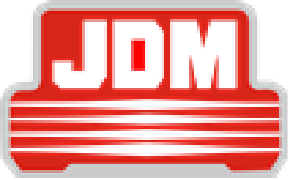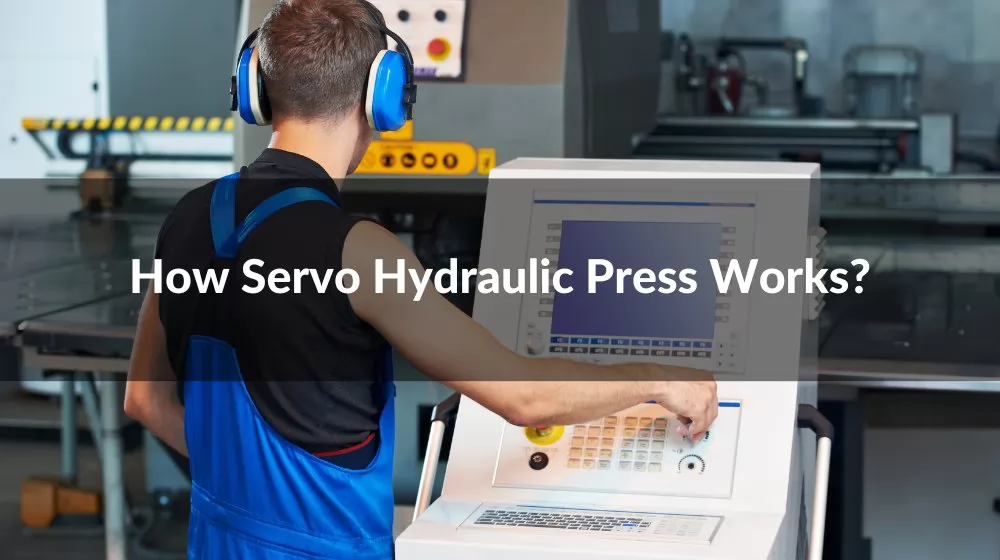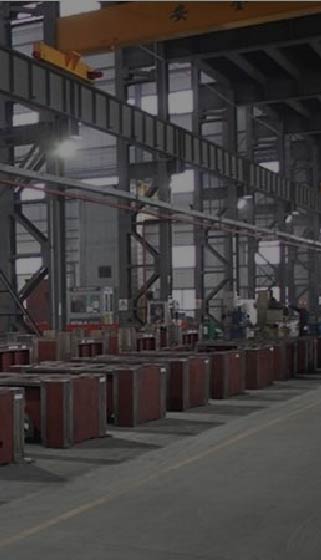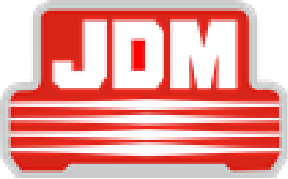








In this comprehensive guide, we'll explore the intricacies of servo hydraulic presses, delving into their components, operation principles, and the myriad of applications they serve. Whether you're a seasoned professional in the manufacturing industry or simply intrigued by the latest industrial innovations, this article promises to enlighten you about one of the most sophisticated tools in modern manufacturing.
In the world of modern manufacturing and precision engineering, servo hydraulic presses stand out as a cornerstone technology. These machines, known for their efficiency and precision, are an integral part of various industrial processes. But what exactly are servo hydraulic presses?
At their core, servo hydraulic presses are sophisticated pieces of equipment designed to deliver controlled and precise force using hydraulic pressure. The term 'servo' refers to a system that utilizes a servo motor to control the movement of the press. This inclusion of a servo motor is a critical distinction, setting these presses apart from traditional hydraulic systems.
The beauty of a servo hydraulic press lies in its versatility and precision. These machines can be programmed to operate at various speeds and pressures, allowing for a wide range of applications, from metal forming to composite molding. Their ability to apply exact force with high repeatability makes them invaluable in scenarios where precision is paramount.
Furthermore, the integration of servo technology enhances the efficiency of these presses. By precisely controlling the press's movement, energy consumption is optimized, leading to cost savings and a reduced environmental footprint. This level of control also results in improved product quality and consistency, key factors for businesses aiming to stay competitive in today's market.
The servo motor is the driving force behind the precise movements of a servo hydraulic press. It's not just any motor; it's a sophisticated component that allows for exact control over the speed and position of the press. This precision is crucial in applications requiring the utmost accuracy, ensuring that every movement is consistent and repeatable.
At the heart of the press lies its hydraulic system, a complex network of pumps, valves, and cylinders. This system is responsible for generating the force needed to mold, press, or shape materials. The beauty of a hydraulic system is its ability to apply tremendous force in a controlled manner, making it ideal for a wide range of industrial tasks.
The frame and structure of a servo hydraulic press are its backbone. Designed to withstand high pressure and stress, the frame ensures overall stability and durability of the machine. A robust frame is essential, as it directly impacts the press's effectiveness, safety, and lifespan.
Modern servo hydraulic presses are equipped with advanced control systems and user interfaces. These systems allow operators to program and monitor press operations with ease. From setting the pressure parameters to adjusting the stroke length, the control system is the brain of the press, enabling precise and efficient operation.
The integration of servo motors in hydraulic presses marks a significant leap in performance and precision. These motors enhance the press's capability by providing accurate control over the speed and position of the ram. This precise control translates to improved product quality, reduced material wastage, and the ability to perform complex pressing tasks with ease.
The hydraulic circuit is the lifeline of a servo hydraulic press. It's where the power flows and gets transformed into the force that drives the press. This circuit consists of pumps, valves, hoses, and cylinders working in harmony to generate and direct hydraulic fluid flow, culminating in the controlled application of force.
Central to the operation of a servo hydraulic press is the generation and control of pressure. This involves managing the hydraulic fluid's force as it moves through the system. The ability to precisely control this pressure is what allows the press to execute tasks with high accuracy. From delicate touch to powerful compression, the press can be tuned to the specific needs of the task at hand.
Servo hydraulic presses come in various forms, notably benchtop and floor standing models. Benchtop models are compact and ideal for smaller workspaces or tasks requiring less force. In contrast, floor standing presses are larger, capable of exerting more force, and are typically used in heavy-duty industrial applications. The choice between the two depends on the specific needs of the operation, including space constraints, force requirements, and the scale of production.
There are also specialized servo hydraulic presses tailored for specific industries. For example, the automotive industry might use presses designed for forming car parts, while the aerospace industry might require presses capable of handling high-strength materials. These specialized presses are engineered to meet the unique requirements of different sectors, ensuring optimal performance and results.
One of the strengths of servo hydraulic presses is their customizability. Manufacturers often offer a range of features that can be tailored to specific applications. These features might include adjustable pressure settings, programmable controls, and various attachments or tools. Such versatility makes these presses highly adaptable to a wide array of tasks, from simple pressing operations to complex, multi-stage processes.
One of the most significant advantages of a servo hydraulic press is its precision and control. The integration of servo motors allows for exact control over the press's movements, ensuring that each cycle is consistent and accurate. This precision is crucial for applications where even the slightest deviation can result in product defects or inconsistencies.
Another key benefit of servo hydraulic presses is their energy efficiency. Unlike traditional hydraulic presses that constantly run their pumps, servo-driven systems can adjust their energy consumption based on the task's demands. This not only reduces operational costs but also contributes to a more sustainable and environmentally friendly production process.
In terms of speed and performance, servo hydraulic presses excel. They can operate at higher speeds compared to traditional presses without sacrificing accuracy or force. This increased speed translates to higher productivity, allowing businesses to complete more tasks in less time and respond quickly to market demands.
Lastly, reduced noise levels are a notable advantage. Servo hydraulic presses operate more quietly compared to their conventional counterparts. This reduction in noise contributes to a better working environment, which can lead to increased worker satisfaction and productivity.
In the automotive industry, servo hydraulic presses play a pivotal role. They are used for tasks like stamping car body parts, forming chassis components, and creating intricate interior features. The precision and control offered by these presses are essential for maintaining the high-quality standards required in automotive manufacturing.
The aerospace industry benefits significantly from servo hydraulic presses, especially in the manufacturing of components that require extreme precision and strength. These presses are used to form and shape high-strength materials used in aircraft structures, ensuring components can withstand the demanding conditions of aerospace environments.
Metal forming and shaping is another area where servo hydraulic presses shine. From creating intricate jewelry pieces to large-scale industrial parts, these presses provide the necessary force and precision. Their ability to handle various metals and alloys with exactness makes them indispensable in metalworking industries.
Lastly, servo hydraulic presses are key in the processing of plastic and composite materials. Whether it's for automotive parts, aerospace components, or consumer products, these presses allow for the precise molding and shaping of these materials, playing a crucial role in the manufacturing of a wide range of products.
The world of servo hydraulic presses is constantly evolving, with recent advancements focusing on increasing precision, efficiency, and versatility. Future trends point towards smarter, more connected, and adaptive systems. Innovations such as real-time monitoring, predictive maintenance, and AI-driven process optimization are becoming more prevalent, offering significant improvements in manufacturing processes.
Integration with Industry 4.0 is a key area of focus for servo hydraulic press development. This includes the incorporation of IoT (Internet of Things) capabilities, enabling presses to communicate with other machines and systems within the manufacturing network. This connectivity allows for more streamlined and efficient operations, as well as enhanced data analysis and management.
Emphasizing sustainable practices in manufacturing is another crucial aspect of recent innovations in servo hydraulic press design. This includes the development of more energy-efficient models, reduction in waste and emissions, and the use of environmentally friendly materials and processes. These sustainable practices not only reduce the environmental impact but also offer long-term cost savings and compliance with increasingly strict environmental regulations.
The working principle of servo hydraulic presses is increasingly being enhanced with AI and automation. This integration allows for more intelligent control systems, capable of self-optimization and learning from past operations. The potential for AI in this context is vast, ranging from predictive maintenance to real-time adjustments during operations, which significantly boosts efficiency and productivity.
As technology advances, servo hydraulic presses are finding applications in new markets. Their versatility and precision make them suitable for emerging sectors like renewable energy and advanced electronics manufacturing. By adapting to various materials and complex processes, these presses are proving to be indispensable in diverse industrial landscapes.
Preparing for future challenges involves continually updating and refining the design and capabilities of servo hydraulic presses. This preparation includes anticipating changes in manufacturing requirements, evolving industry standards, and environmental considerations. Future-proofing these machines ensures their relevance and effectiveness in a rapidly changing industrial world.
Understanding the differences between servo hydraulic presses and mechanical presses is key for manufacturers when deciding on the right equipment for their operations. Each type has its own set of characteristics, advantages, and ideal applications.
Servo hydraulic presses offer unparalleled precision and control, thanks to their servo motors and hydraulic systems. This allows for more complex, variable operations and a higher degree of customization. They are also typically more energy-efficient and quieter than mechanical presses. These presses excel in tasks where precision and control over speed and force are paramount.
Mechanical presses, on the other hand, operate using a mechanical flywheel to store and transfer energy. They are generally faster than hydraulic presses and can achieve higher production rates. Mechanical presses are well-suited for operations that require consistent, high-speed production and are less complex in terms of force application.
When selecting industrial presses, understanding the differences between servo hydraulic presses and pneumatic presses is crucial for manufacturers. Both types have unique characteristics that make them suitable for specific tasks and environments.
Servo hydraulic presses are renowned for their precision and versatility. They utilize hydraulic fluid to generate force, allowing for consistent and controlled pressure application. This makes them ideal for operations requiring a high degree of force control and customization. They are particularly effective in tasks that require delicate precision or variable force application.
Pneumatic presses, on the other hand, use compressed air to exert force. They are generally faster and more cost-effective than hydraulic presses for simpler, high-speed applications. Pneumatic presses are often chosen for tasks that require less force and precision but need rapid, repetitive actions.
In conclusion, servo hydraulic presses represent the pinnacle of industrial innovation, blending precision, efficiency, and versatility in ways that transform manufacturing processes. As we've explored their components, working principles, and applications, it's clear that these presses are indispensable in various industries. For those seeking the best in servo hydraulic press technology, look no further than JDM, China's leading manufacturer in this field. JDM's commitment to quality and innovation ensures that each press is not just a tool, but a gateway to enhanced productivity and success.
Read More:






